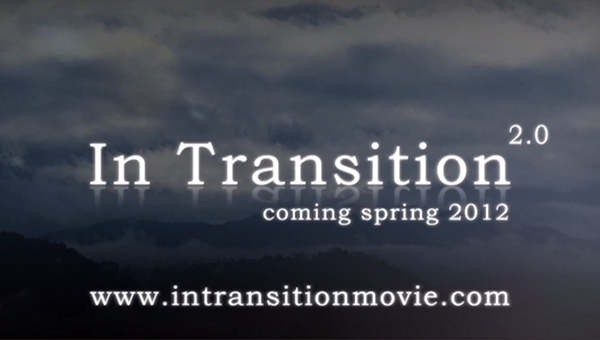Documentaries like AN INCONVENIENT TRUTH and THE 11TH HOUR, made saucy by large funding and narration from Leonardo DiCaprio, attack the large-scale destruction of our environment through systemic fossil fuel consumption. IN TRANSITION 2.0 is a different kind of beast, looking at creativity rather than destruction, and on a smaller, community-based level, rather than a global one. The film is resultingly heartwarming, encouraging new practises instead of admonishing our current ones.
It opens with a bright-faced youngster explaining the crisis of peak oil and how this makes consumer-based economies unsustainable. He then explains the concept of ‘transition’, the driving idea of the film: creating community-based green economies, which are self-sufficient and sustainable. Its cards are on the table and presumably so are yours by this point – if you’re not already keen on this idea, it seems like the documentary won’t do much to change your mind. The film reads like a roadmap for setting up your own transition group, and its participants seem very much persuaded of their own methods. But it’s not hard to see why, with the outcomes of their work displayed so convincingly.
..participants seem very much persuaded of their own methods. But it’s not hard to see why, with the outcomes of their work displayed so convincingly.
The film jumps all around the world, displaying ‘transition’ groups at various stages of altering their communities. Moss Side in Manchester shows the organisational stage and the impulses that drive the groups’ creators. Ali Mohamed explains that they recruit new members by focusing on interpersonal relations and community-based transformation. Then the Whitney Avenue Urban Farm in Massachusetts shows us that one can “dress like a punk, garden, and still be cool”. The urban farmers here grow food in the back yards of vacant houses, which they give free to local food banks. Lorna Taylor, a local resident, sheds a tear of joy that what was once a near-ghetto has become the envy of nearby communities.
IN TRANSITION 2.0 shows that the groups themselves are not immutable. Some groups grow to self-celebration: colourful street parades in costumes made from recycled products show off togetherness in environmental issues. Another group from Lancaster explains how the best intentions of community groups can often turn sour, with neighbourly bitchiness taking over the primary objectives of green sustainability.
Other groups show even more novel and exciting ideas: a consumer-owned grocery shop; a locally-owned solar energy company; a ‘bread bond’, where consumer loans pay for the bakery premises and the investors get their return in literal bread, and more. Some of the participants interviewed run the risk of sounding self-important, while others are humbly aware of being part of something much larger than themselves.
The documentary is often visually delicious…
The documentary is often visually delicious, with close-up montages of smiling children contrasted at long-distance with beautiful destruction after an earthquake in New Zealand. One commentator describes the theory of transition as a “detox for the West”, pitching it as a mid-point between unconcerned governments and ineffective individuals, masking its own effectiveness by “cheerful disclaimer” at the end.


How much does it go into the whole peak oil thing? I’m just curious as the whole concept was highly controversial when I was working in oil research…